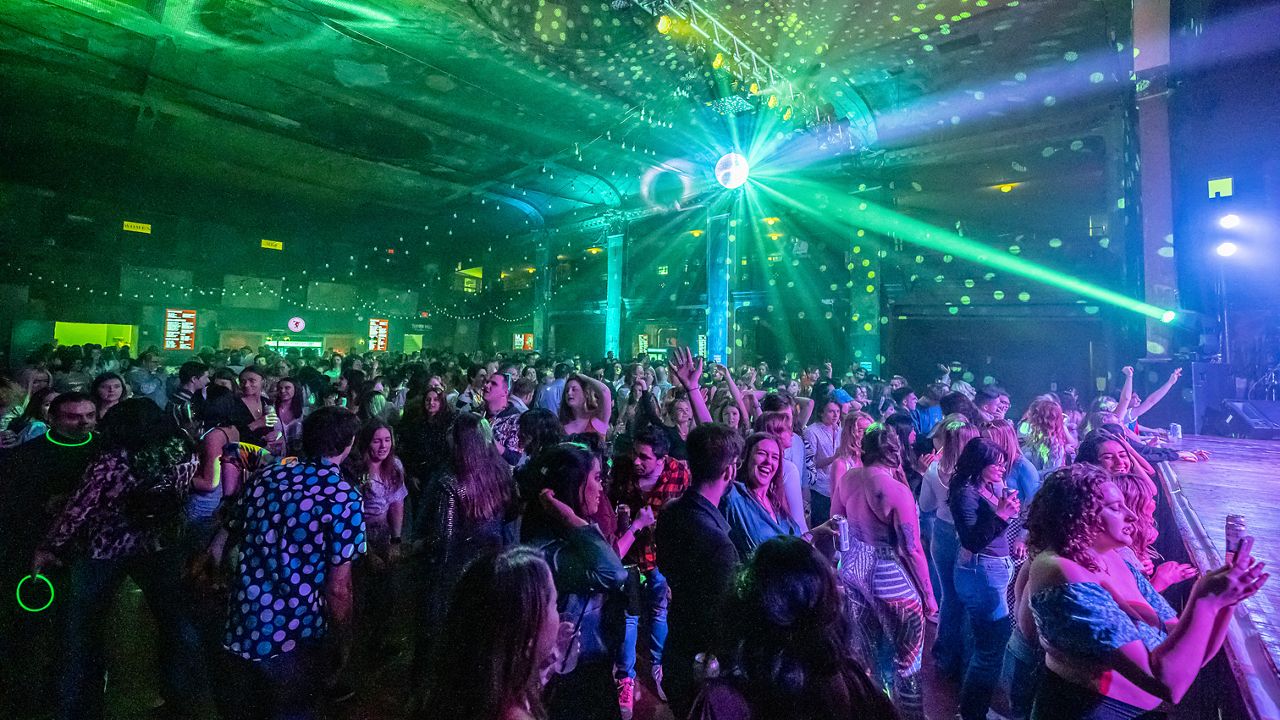MILWAUKEE — Deep blue and red lights gleamed off Melissa Saputo and their friend Darby as they danced their souls out to “Misery Business” by Paramore in Milwaukee’s Turner Hall.
For Saputo, it’s a moment that sticks.
“We knew every word by heart and screamed each of them to each other,” they said.
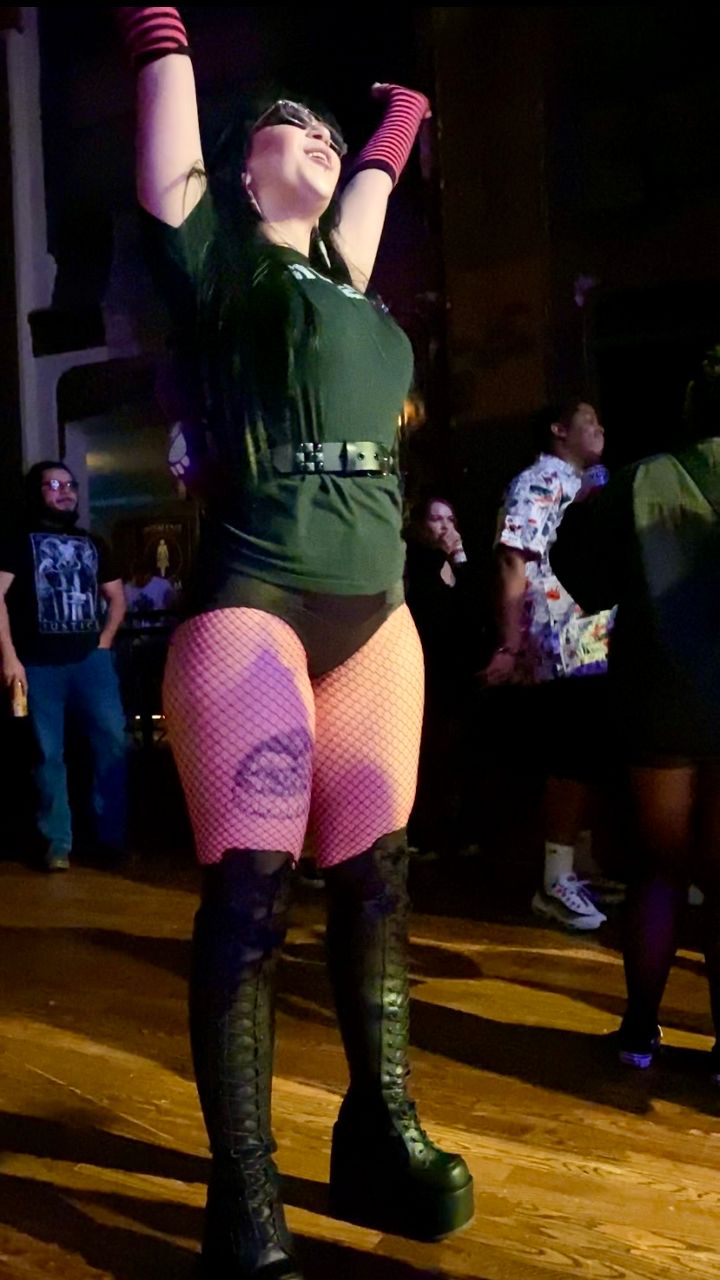
Saputo recently moved to Milwaukee, but they’re no stranger to dance parties. They’ve been to over 15.
“My favorite aspect is probably making friends for a night,” said Saputo, who uses she/they pronouns.
At the Emo Night Brooklyn dance party at Turner Hall, they said it was nice to be around people in the same emo “subculture” as them.
Dance parties aren’t something new in Wisconsin or Milwaukee. They’ve been around at least a few decades, according to local DJ Frank Straka. He’s known for his “versus” parties at Mad Planet, the second oldest dance club in Milwaukee, next to Victor’s, according to Straka.
Before Straka became a DJ for the venue, he was an attendee. It wasn’t until he tagged along with a friend to DJ a local bar that he considered diving into the profession.
Debates on Facebook over Michael Jackson and Prince would further propel him into the niche he’s now known for: versus dance parties. At Mad Planet, he’s playing shows like The Cure vs. The Smiths, Depeche Mode vs. New Order and more.
Over the years, he said he’s noticed the demographics of Mad Planet attendees change a bit, going from a more alternative music crowd to now a more mixed group depending on the show’s theme. The popularity of different genres has also shifted across the market.
Straka said disco-themed shows used to do terrible but now, they’re picking up steam with younger generations. In his ABBA vs. Queen vs. Blondie show, he estimates the majority of his audience is in their 20s.
“They go (expletive) bonkers over Queen and ABBA songs, more so than any other band that I’ve ever played in my life,” he said. “It’s insane how crazy people get to Queen songs like Bohemian Rhapsody…that song drives people into a frenzy…”
But for a while, he said Mad Planet was struggling, especially through the pandemic. That’s not unlike many other music venues across the state. When COVID-19 hit, venues were forced to close their doors — and it took them a while to recover.
Lauren Toler said their Madison entertainment venues didn’t hit an upswing until fall of 2022. Toler is the senior market director of Madison for Frank Productions Concerts (FPC) Live, which operates several Madison entertainment venues, including The Sylvee, Majestic Theatre, The Orpheum Theater and more.
“Come 2023 is the closest we’ve been to reaching some of our pre-pandemic numbers,” said Toler.
As shows have come back, entertainment groups have seen the community hungry to get back out there.
“People want to go out and people want to attend things with like a lot of rigor,” said Amber Solheim, a booking assistant for the Pabst Theater Group in Milwaukee, which operates Turner Hall.
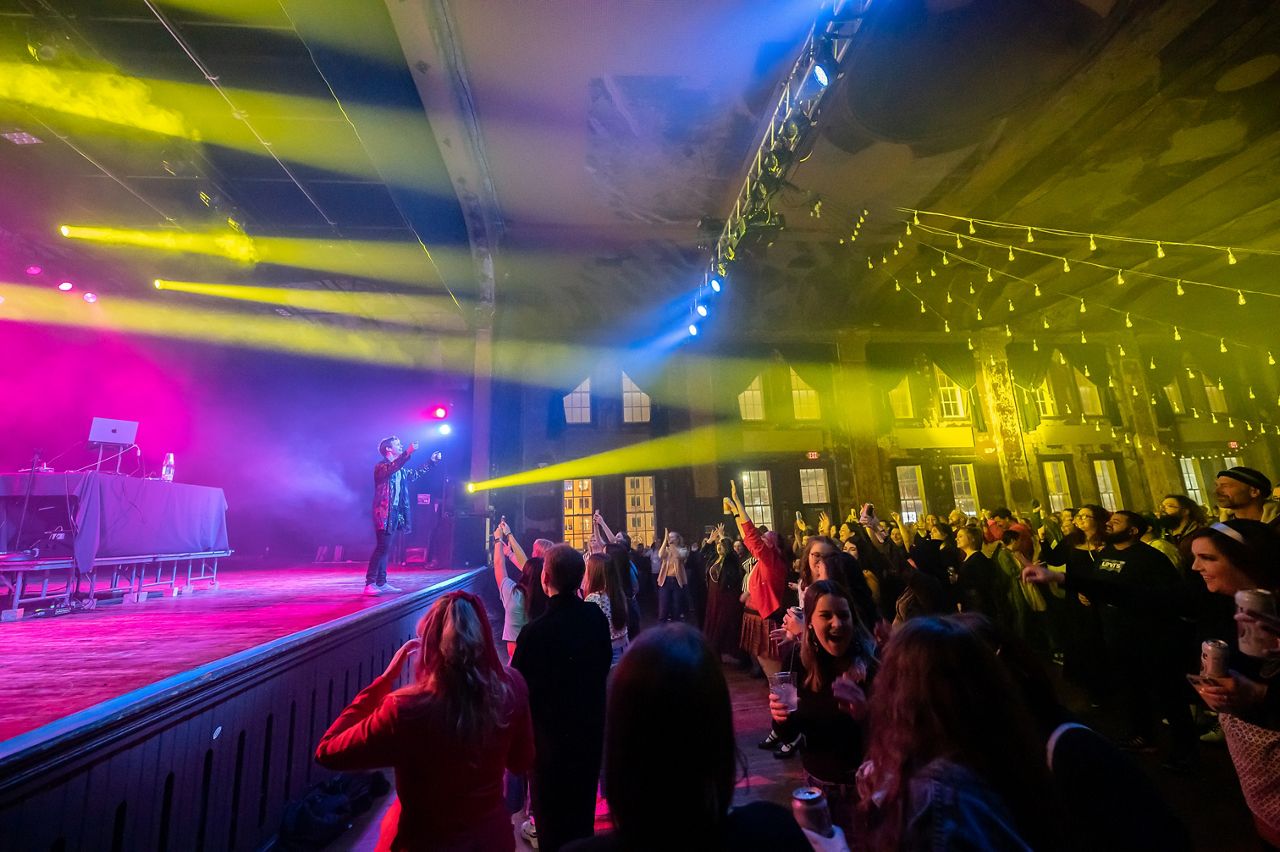
One of the events coming back with a boom is dance parties.
Both Toler and Solheim said that since the pandemic, there seem to be more themed dance parties popping up around the state. At the dance events, DJs play a curated set based on the theme. They often cater to a specific niche, whether it’s Taylor Swift, Harry Styles, Broadway or even Spongebob.
That niche carries over into an immersive experience, complete with on-theme drinks and photo booths. Some dance parties even bring in extra on-stage talent. Solheim said for their K-pop show, they’ve brought in local dance troops from the University of Wisconsin-Milwaukee or Danceworks to perform.
Toler said these parties offer a “win-win” scenario for venues and attendees. It’s simultaneously a way for the venue to fill gaps in the entertainment calendar and provide people with a social outlet at a lower cost than a concert.
“It’s a cool opportunity for patrons to come out and celebrate an artist’s music, who may not otherwise have the chance to see them live either because they’re not playing the market or because tickets are a [higher] price,” said Toler.
It’s also a way for people who may be underage to go out and enjoy a show. Solheim said many concert venues require attendees to be 21 and over, but most of their dance parties at Turner Hall in Milwaukee are open to all ages.
“It’s giving the people a new opportunity who aren’t necessarily 21 to be able to go get out and have that club environment,” she said.
That’s also allowing different generations to socialize.
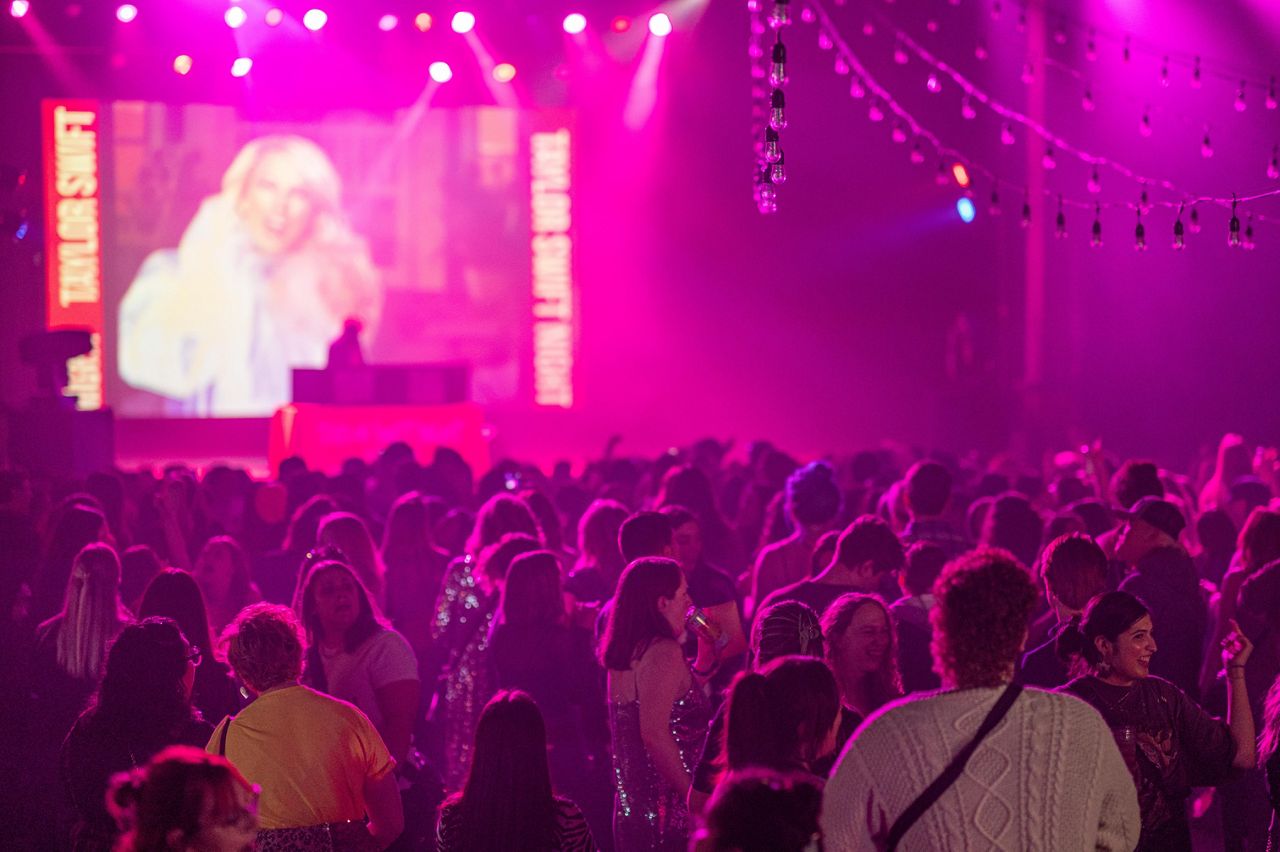
“You get people who are both younger college-aged coming in dressing up and then you also get people who are older and who grew up listening to ABBA and are in their old garb,” said Solheim, referring to their Gimme Gimme Disco event featuring ABBA classics. “It’s really cool to see the different generations coming together and being able to enjoy the same music.”
Ticket sales reflect the dance parties' up-and-coming popularity. Toler said at their Majestic venue in Madison, dance parties are selling out further in advance than ever before. Venues can be packed full, with anywhere from 100 to 2,500 people.
The unique social aspect seems to be one of the biggest draws for attendees.
Emo Night Brooklyn attendee Saputo said at dance parties, the focus tends to fall more on the energy in the room instead of on an artist, such as in a concert setting.
Plus, there’s something special about belting out lyrics with people who like the same music as you.
Toler said she could see it happening at their Taylor Swift dance party.
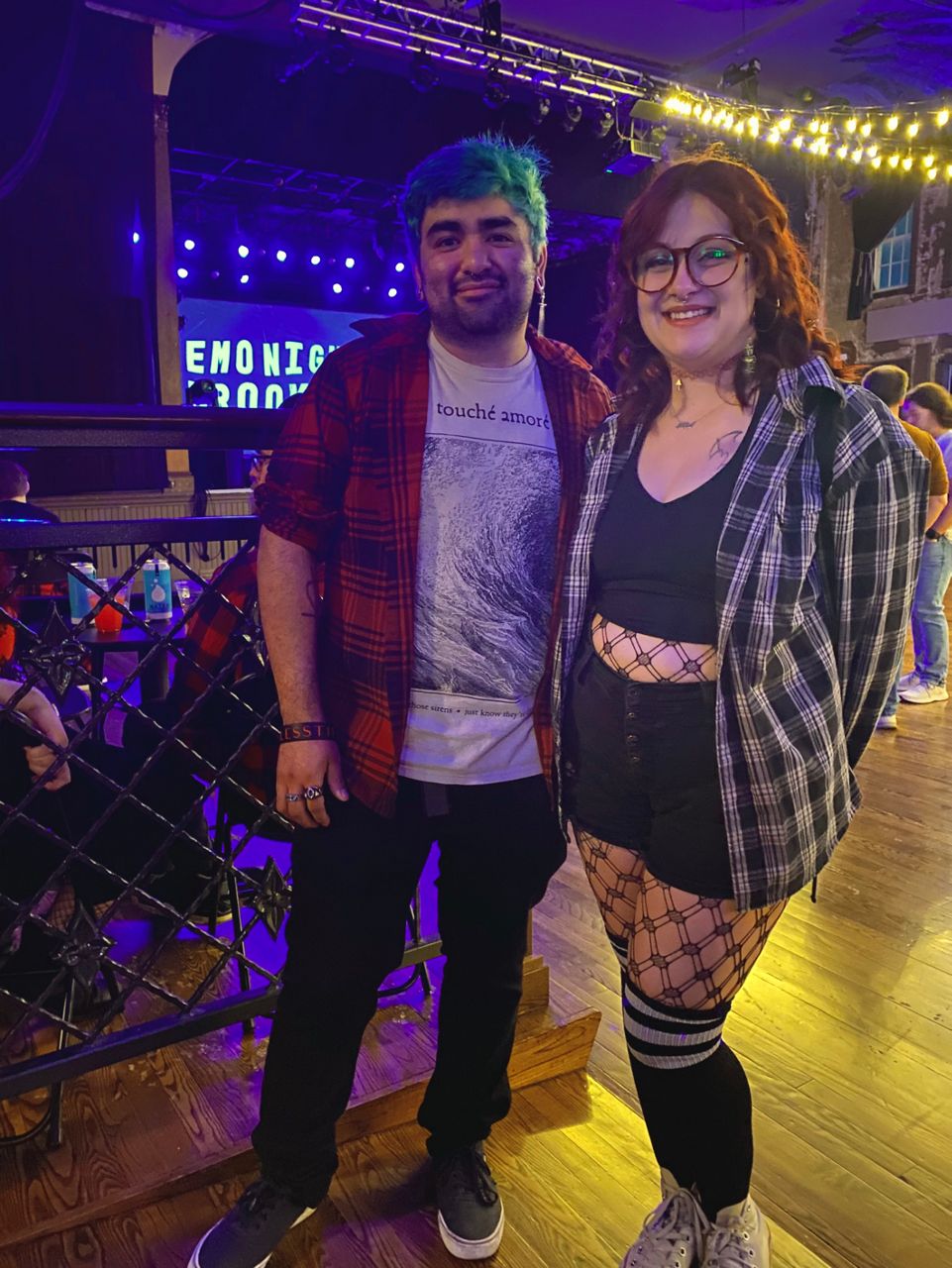
“When I went to that one, it was 600 diehard Taylor Swift that were reciting and singing every single lyric to every single song, whether it was a ballad, or a slower song, or an absolute jam,” she said. “I mean, it was a really profound experience about people really connecting over her music and knowing every word, every song. It was pretty cool.”
Dance party attendee Cesar Olvera hadn’t been to a dance party before, but said he’s felt that deep sense of connection over music at other events around Milwaukee, like Riot Fest.
“The fact that you had multiple people in like the crowd singing, looking at you, at your face and singing the same lyrics that you’re singing, that you know how they feel and how you feel, and just have that moment of connection… you don’t feel so alone,” he said.
Connecting with others in this special way is what brought out friends, Angelica Soto, Madi Martin, Cassidy Rose and Joe Simon to the Pabst’s Emo Night dance party.
As life gets busier after high school, it can often be hard for friends to gather.
“We just wanted to have that moment like we were back in high school together,” said Martin.
Soto said dancing unlocked core memories from their friends' preteen years.
The nostalgia factor was also on the mind of attendee Paige Wiedmer. She said dance parties offer up the opportunity to simply get out and dance, something that doesn’t seem as readily available as you get older.
“You can’t dance as an adult anymore. They don’t do that at bars. It’s not a common thing at parties. It’s not something that people regularly do. I dance with my kid at home. But that’s about the only place that you can go and dance,” she said. “That (dancing) stops after high school. And college doesn’t offer stuff like that really anymore.”
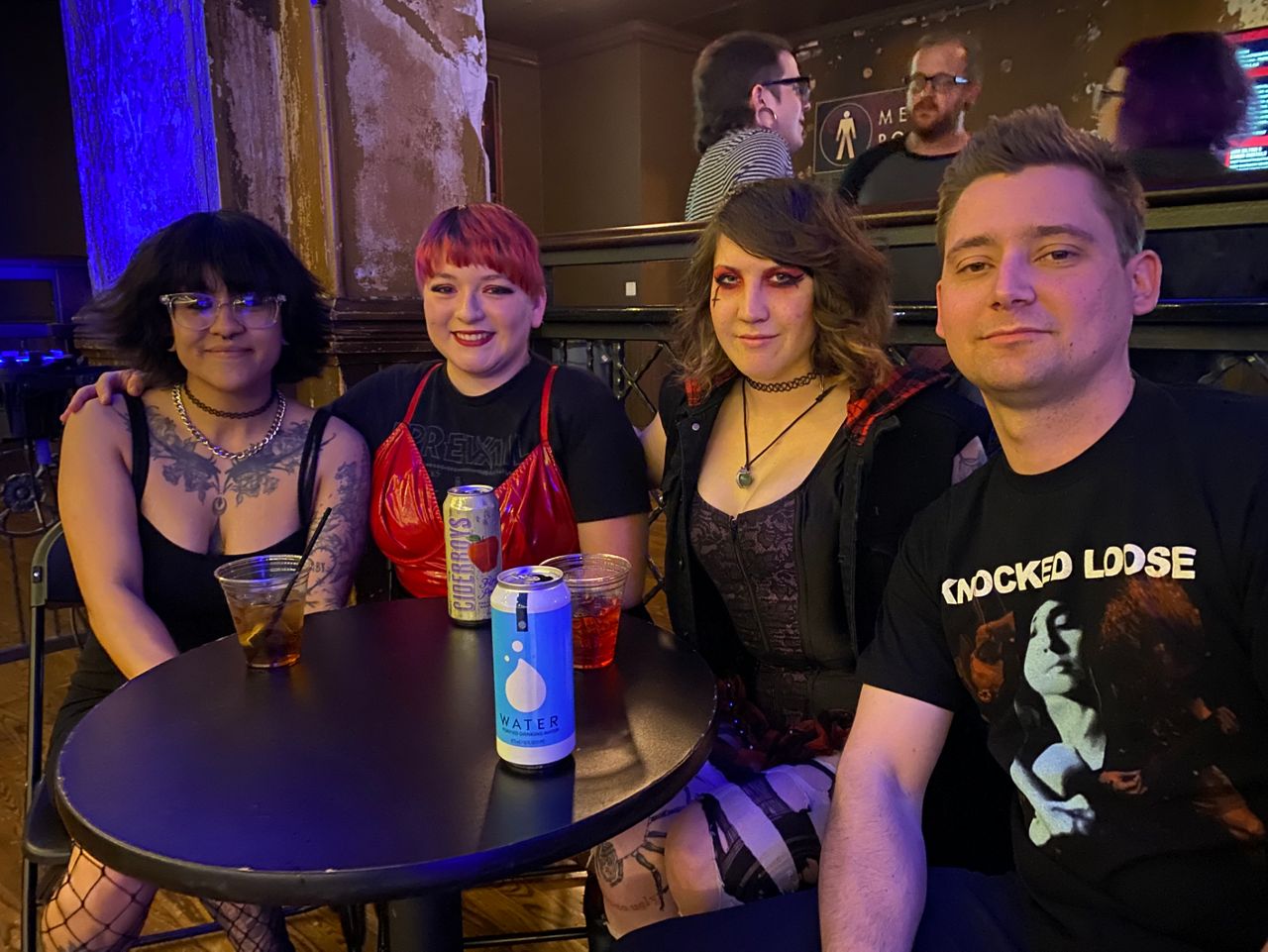
When it comes down to it, dance parties are simply about letting loose and having fun (DJs included).
“I feel like a rockstar sometimes,” said DJ Straka. “It’s super fun when you can go out to a club and have 300 people going crazy because of something that you’re doing.“
“It’s cool to be around people that still get it and still listen to music for listening to music,” said Wiedmer.



